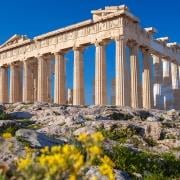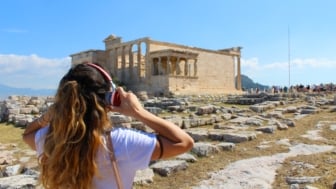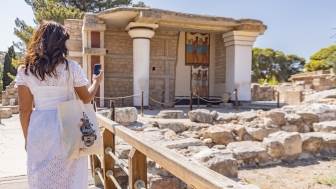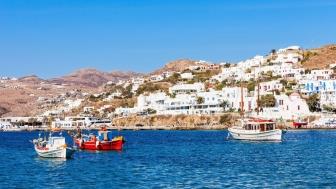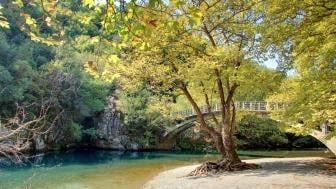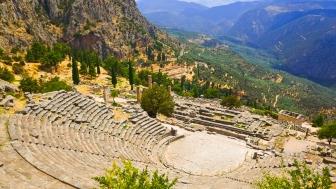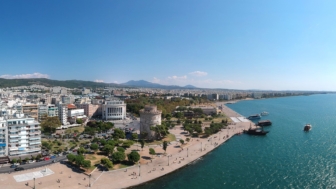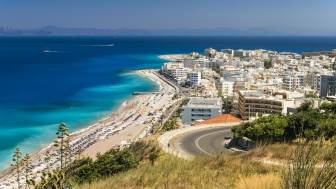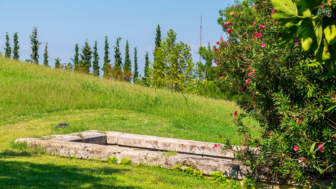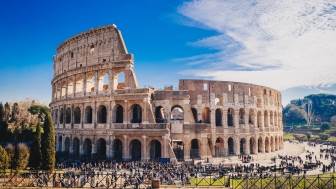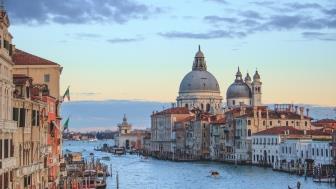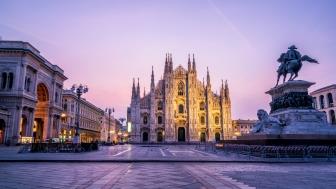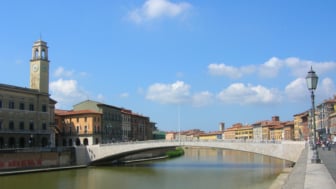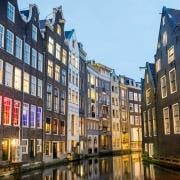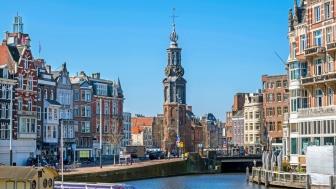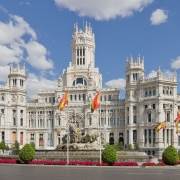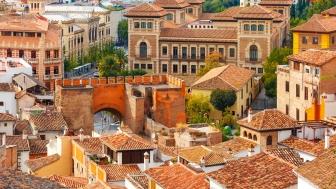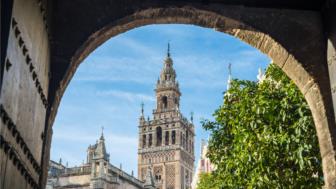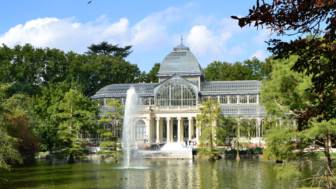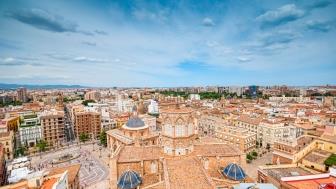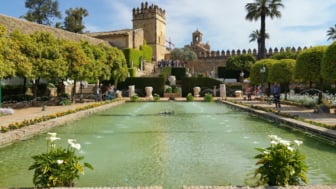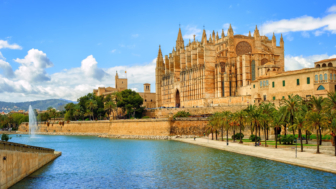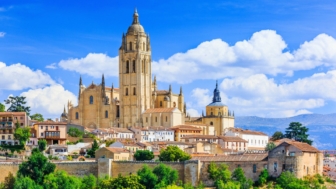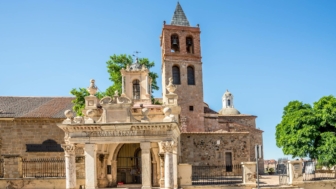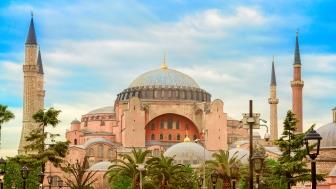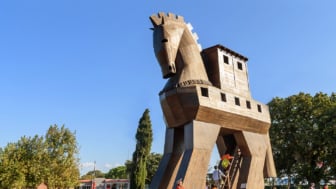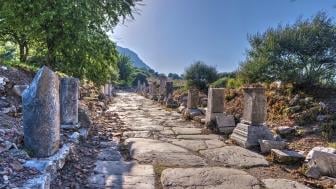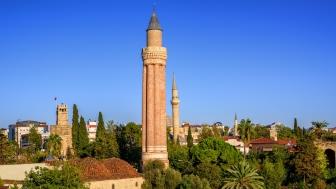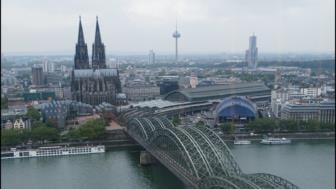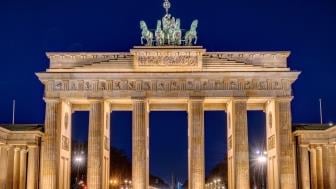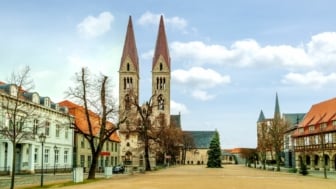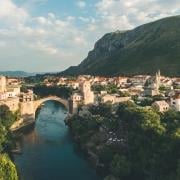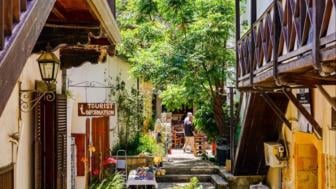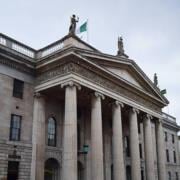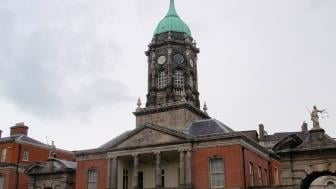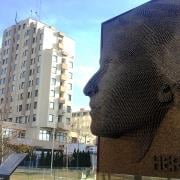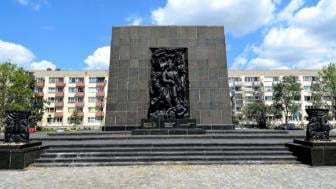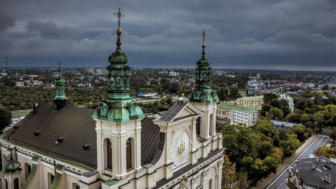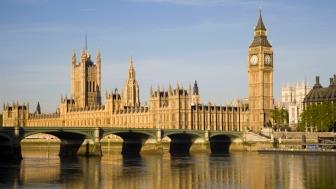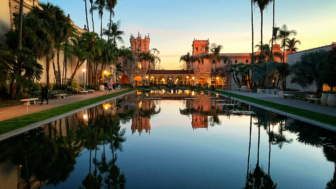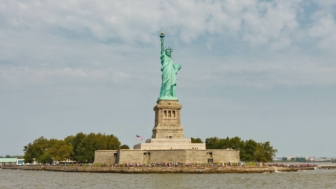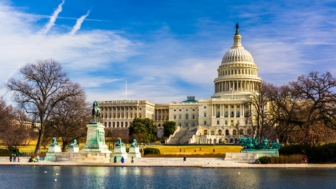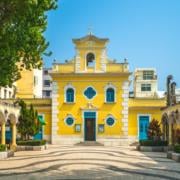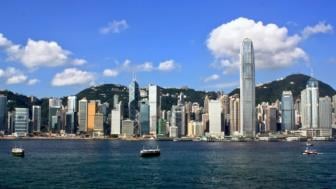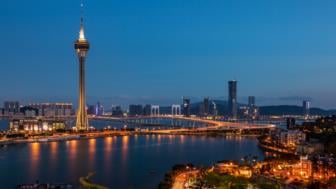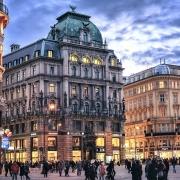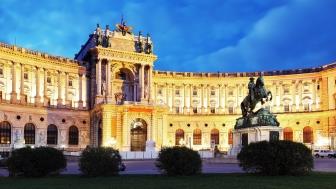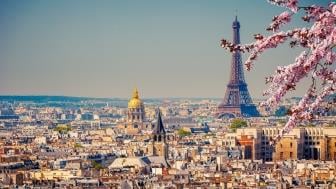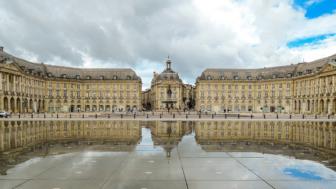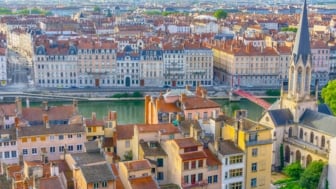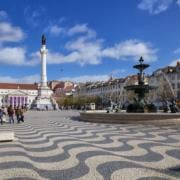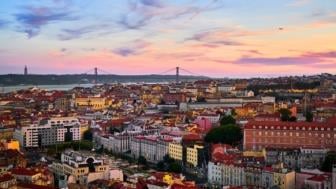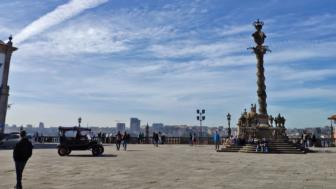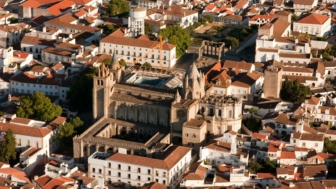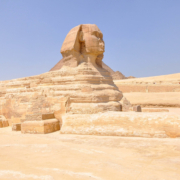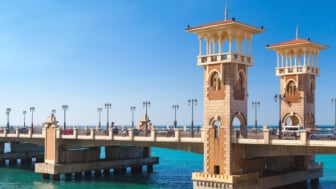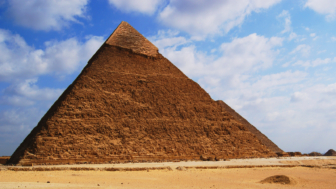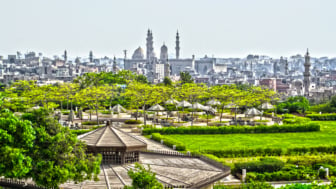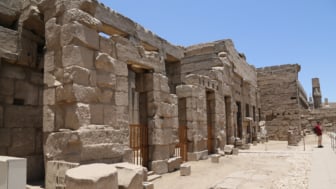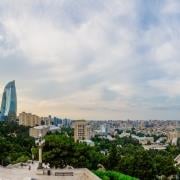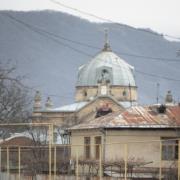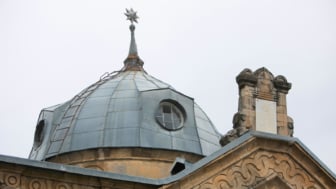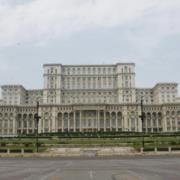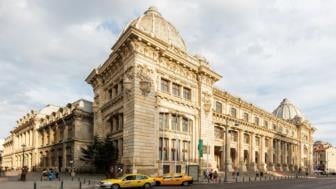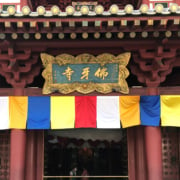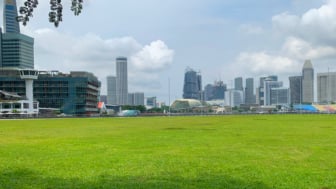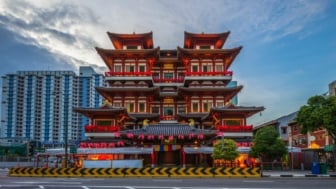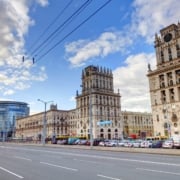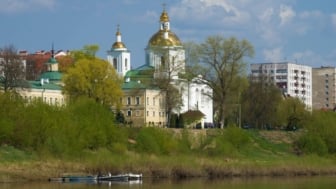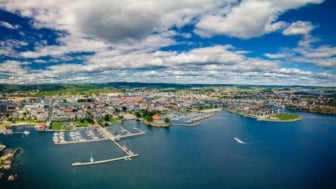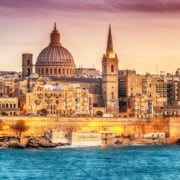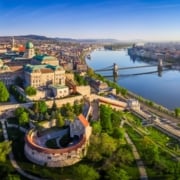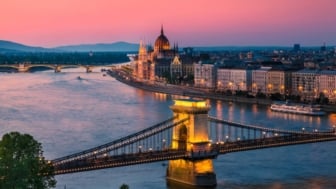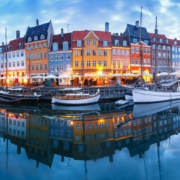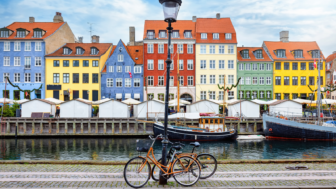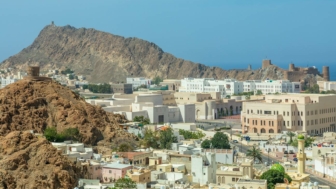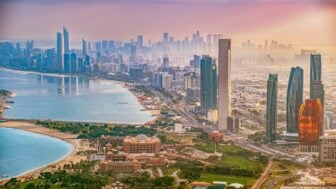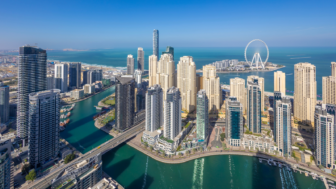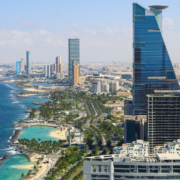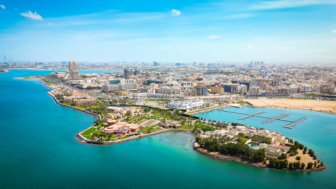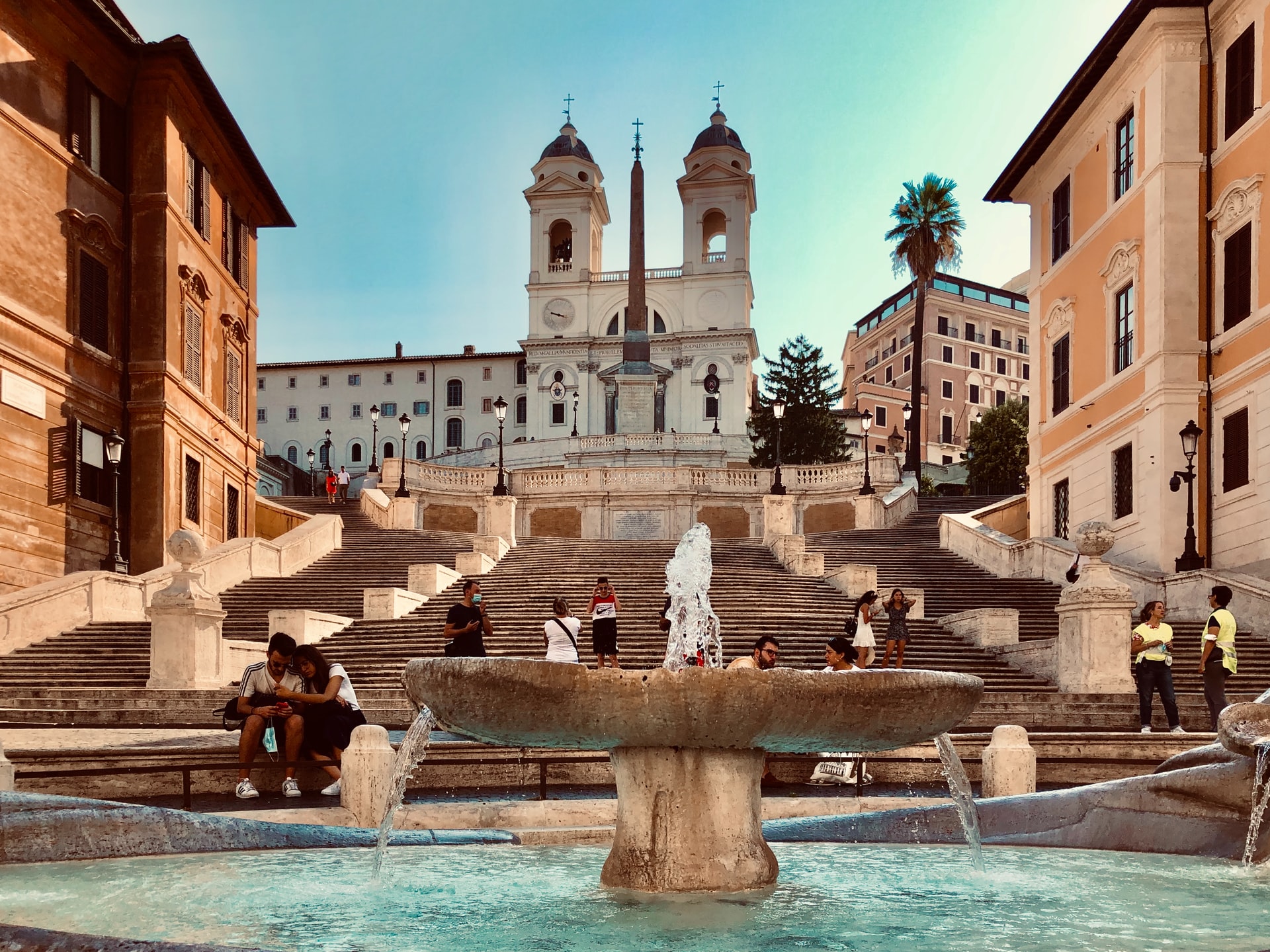Rome brims with scenic squares of great historical importance. Some of them are known for their fountains while others boast Rome’s vibrant life. Start your walking tour in the Italian capital and learn the fascinating stories of the city’s worldwide known piazzas. These are the 10 most impressive squares in Rome.
St. Peter’s Square
Situated in the Vatican City at the feet of St. Peter’s Basilica, St. Peter’s Square is one of Rome’s most famous squares with a worldwide reputation. Designed by the Italian sculptor Bernini in the 17th century, the impressive square is 320 meters long (1049.87 feet) and 240 meters (787 feet) wide. 284 columns, 88 pilasters, a 25-meters high obelisk, and two fountains adorn the magnificent square. Make sure to visit St. Peter’s square at night to see the two fountains in the middle of the square lit up beautifully.
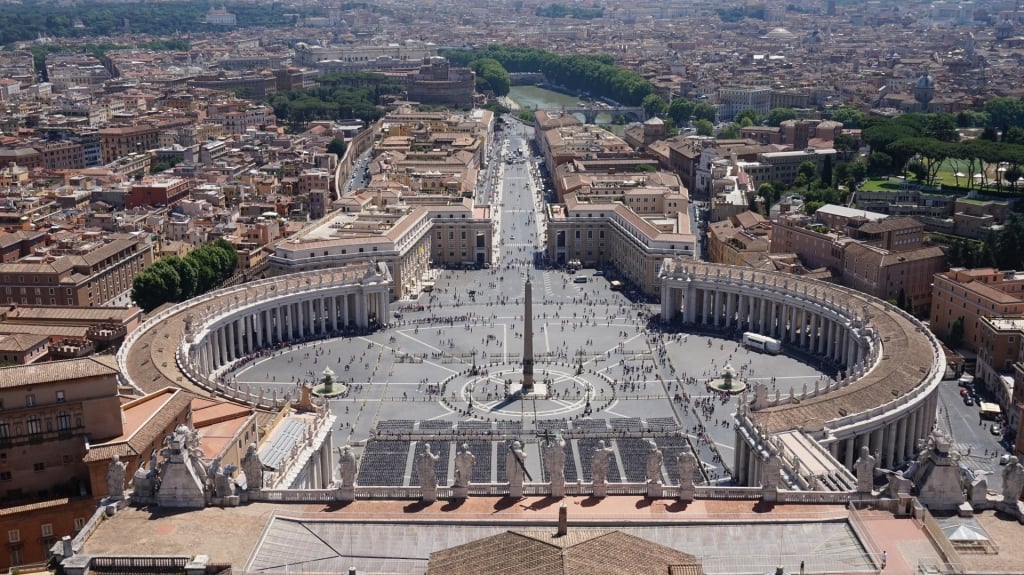
Piazza del Campidoglio
Piazza del Campidoglio is the first modern square to be designed in Rome. It was commissioned to Michelangelo by Pope Paul III. The latter wanted a square to decorate the barren landscape of the Capitoline Hill because the Holy Roman Emperor, Charles V, decided to visit Rome in 1536. It took several centuries for the construction of the Piazza del Campidoglio to be completed that Michelangelo didn’t see it finished.
Fortunately, though, every part of the square was built based on Michelangelo’s design. Piazza del Campidoglio once featured a bronze equestrian statue of Marcus Aurelius but it is currently replaced with a replica since the original is housed in the Palazzo dei Conservatori. Home to the sculpture of the Capitoline Wolf and to the Capitoline Museums, Piazza del Campidoglio is one of Rome’s main attractions attracting millions of travelers every year.
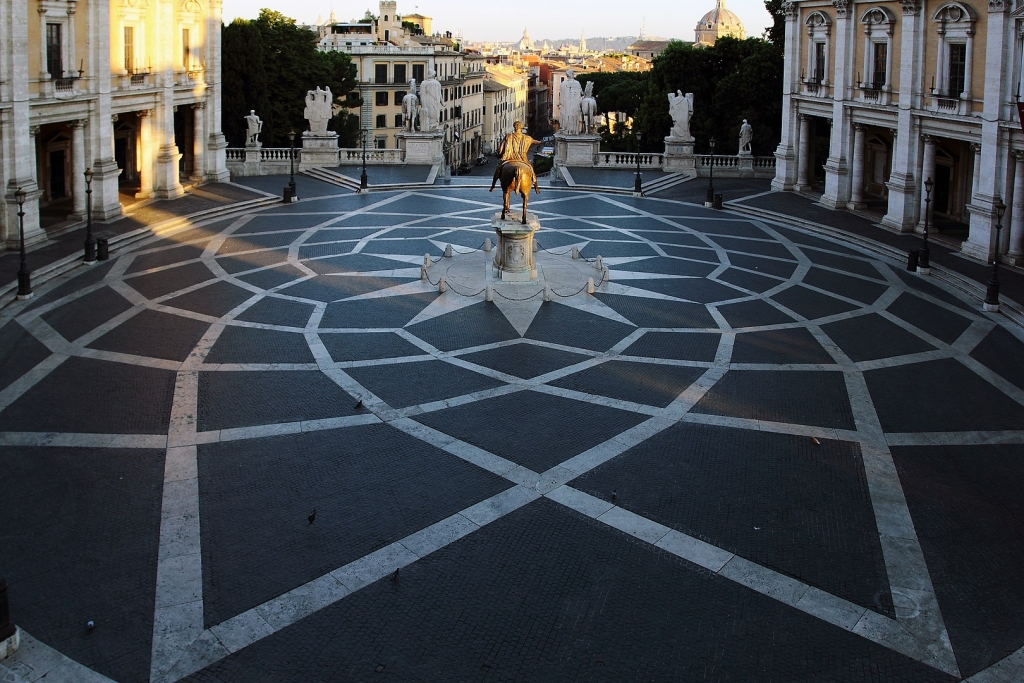
Watch the street artists at Piazza Navona
Built in the 1st century AD, Piazza Navona is located on the site of the Stadium of Domitian (86 AD) near the Church of Sant’ Agnese in Agone. Home to Palazzo Pamphilj and two the three well-known fountains, Fontana dei Quattro Fiumi, Fontana del Moro, and Fontana del Nettuno, the baroque-style square is famous for its elegance and fine architecture. Street artists, food vendors and performers create the square’s vibrant atmosphere luring locals and travelers. Piazza Navona has always been a central place in Romans’ daily life. Until about the 19th century, people every summer would block the drains of the fountains to cause them to overflow. In that way, they created the Lake of Piazza Navona which it is said that locals enjoyed. It is recommended to visit Piazza Navona when the crowds thin out at nighttime and see the exquisite fountains bathed in light.

Piazza Barberini
Located at the end of the street Via Venetto on the Quirinal Hill, the 16th-century Piazza Barberini is a cute square well-known for featuring two fountains designed by Bernini. The most popular is Fontana del Tritone which was built in 1643 and it is sculpted from travertine. The second fountain is the 17th-century Fontana delle Api, which built in recognition of the Barberini family is decorated with bees, the family’s symbol. In a walking distance from the square stands Palazzo Barberini. The Baroque palace houses the Galleria Nazionale d’Arte Antica.
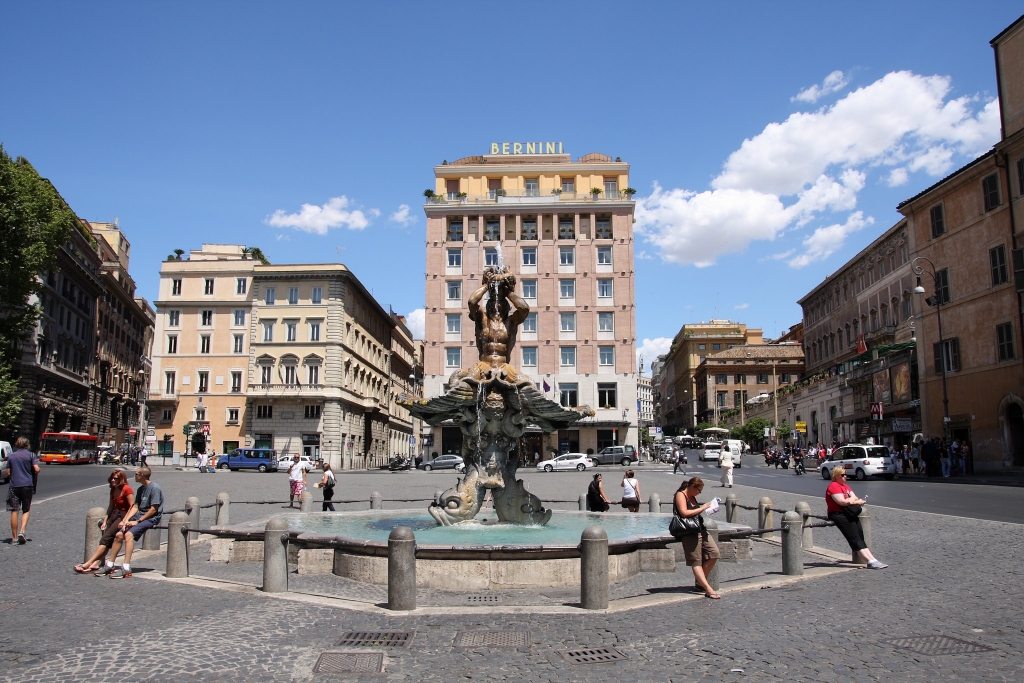
Enjoy the view from Piazza del Quirinale
On top of Quirinal Hill, the tallest of Rome’s 7 hills, lies Piazza del Quirinale. This square was designed in 1573 to be a summer getaway for Pope Gregory XIII. After the unification of Italy, it was converted to a royal family residence and in 1947 it became the presidential home. Due to its location, it offers a breathtaking view of the city of Rome. Therefore, it is one of the city’s most popular attractions. Many travelers head here to witness the changing of the guard ceremony which takes place every day at 3 pm in front of the Palazzo Quirinale.
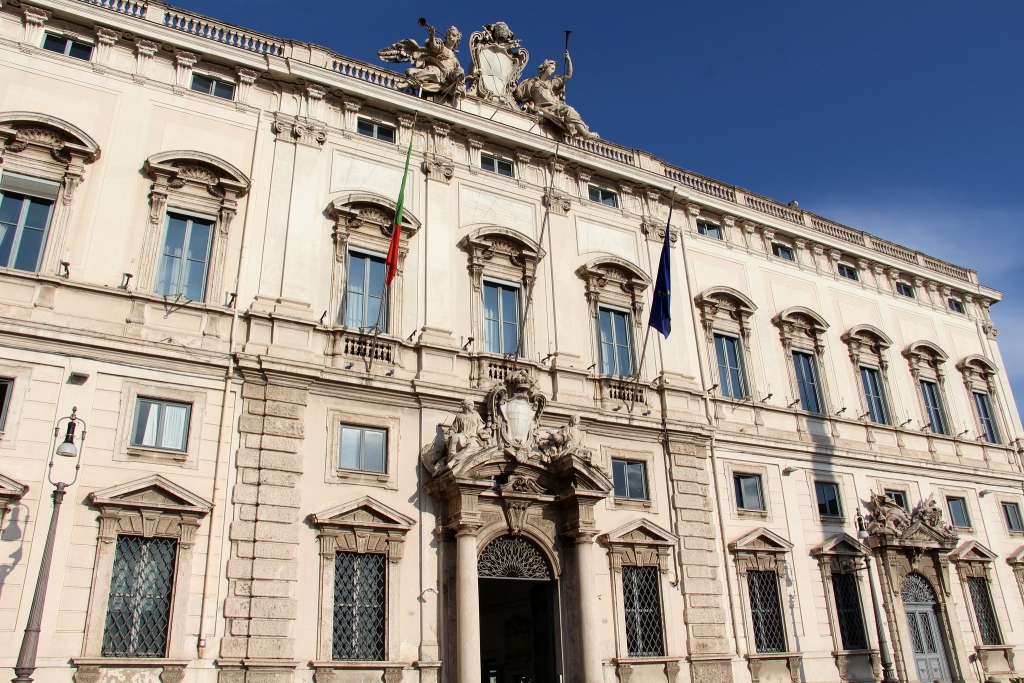
Learn the history of Piazza del Popolo
At the beginning of the street of Via Flaminia, sits Piazza del Popolo, one of the largest squares in Rome. This is where foreigners first came and entered through the main entrance into the city, in the days of the Roman empire. Nowadays, visitors head to the historic square to visit the Santa Maria del Popolo. This Basilica is home to two artworks of Caravaggio and Renaissance decoration. In the middle of Piazza del Popolo stands an Egyptian obelisk, known as Flaminio Obelisk. The entire square was designed by architect Giuseppe Valadier and has a neoclassical style. In the summer months, the square hosts concerts and other outdoor events.
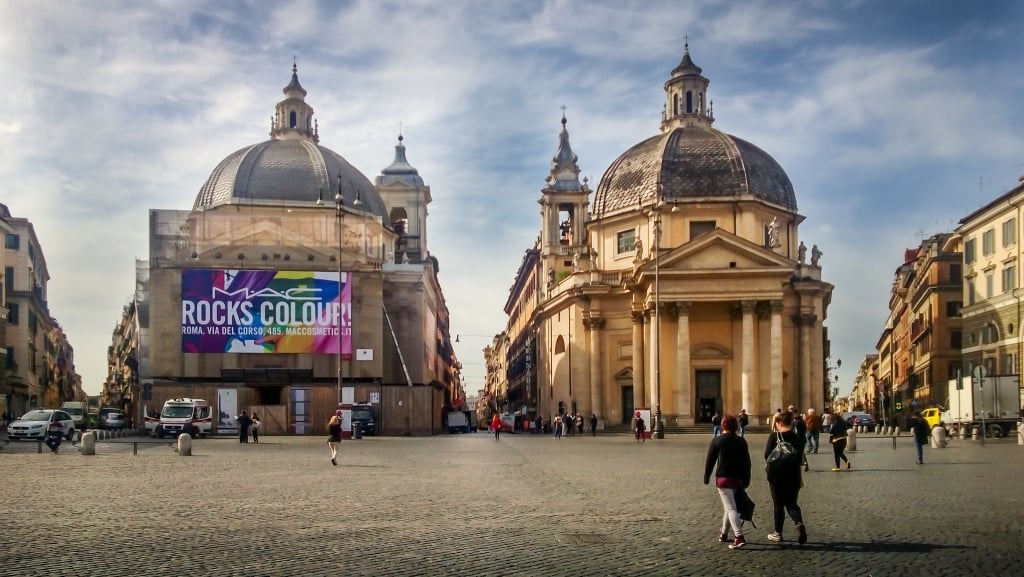
Visit the market at Campo de Fiori
Originally a field of flowers, the area was paved in 1456 and Campo de Fiori was created. Historically, public executions took place in this square but nowadays, it is known for its food and flower market. Surrounded by numerous bars and restaurants, the streets around the square are crowded all day and night. Cinemas, theaters and art galleries are also in a nearby distance adding an artistic vibe to the neighborhood. Campo de Fiori welcomes tourists, students, and travelers from all walks of life. Aside from Campo de Fiori, make sure to add the lesser-known Rome’s bustling street markets to your bucket list.
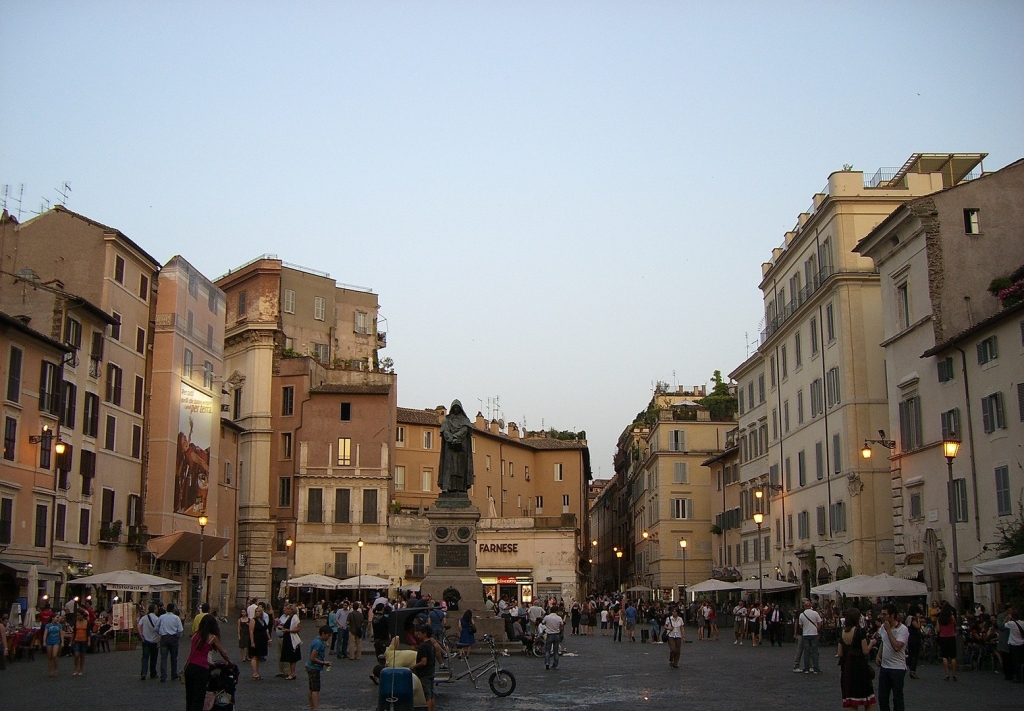
Sit at the Spanish Steps at Piazza di Spagna
Near the high streets of Via Dei Condotti, Via Frattina, and Via del Babuino is one of the most visited squares in Rome. Piazza di Spagna is a Baroque-style square featuring the Spanish Steps that connect Piazza di Spagna to the Church of Trinita Dei Monti. Built in the beginning of the 18th century, the scenic Steps glow in the sunrise when they are bathed in the sunlight. Aside from their historical significance, the Spanish Steps and Piazza de Spagna are well-known for hosting the Donne Sotto le Stelle fashion show every July. The rest of the year locals and tourists relax in the beautiful staircase soaking up the sun. A fountain couldn’t be missing from this picturesque square in Rome. Fontana Della Barcaccia illustrates a boat with bees engraved on it. Combining history, shopping, and art, Piazza di Spagna is bound to fascinate you.
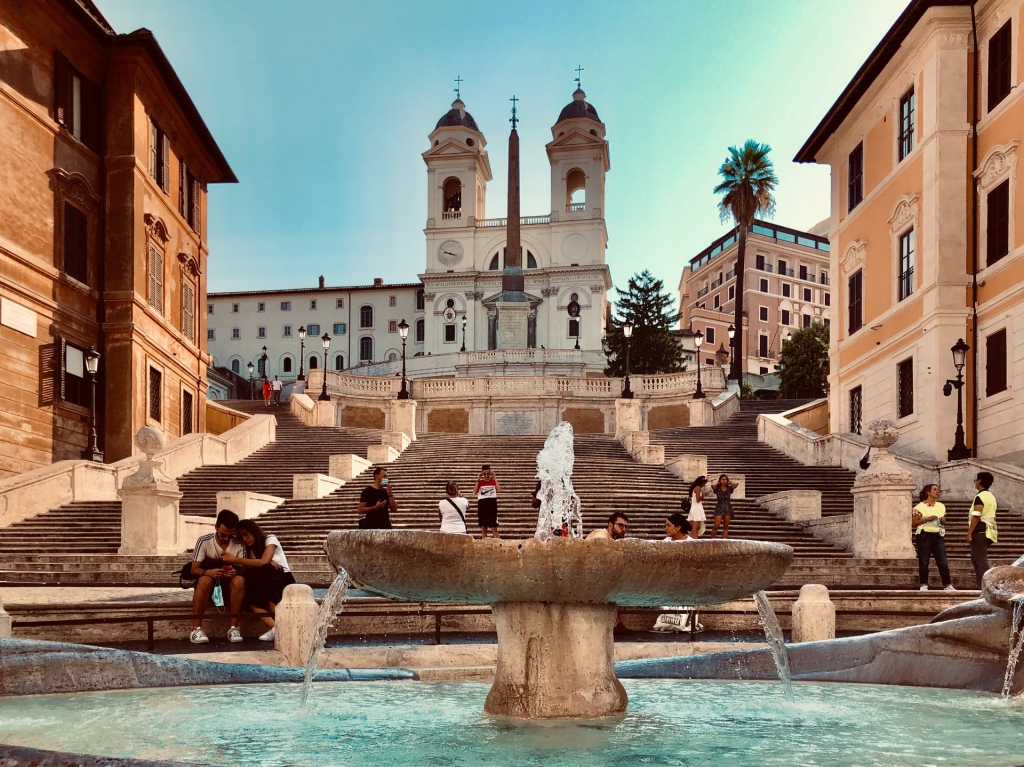
Piazza Della Republic
Piazza Della Repubblica is located in an area that was originally an exedra, a half-circle open room with seats, from the Diocletian Era. There are large buildings and a destroyed temple on the sides of the square. The fountain in the square is named Fontana Delle Naiadi. The four lion sculptures that once decorated the fountain were replaced with four water nymphs in 1901. The nudity was originally an issue when building and designing the fountain.
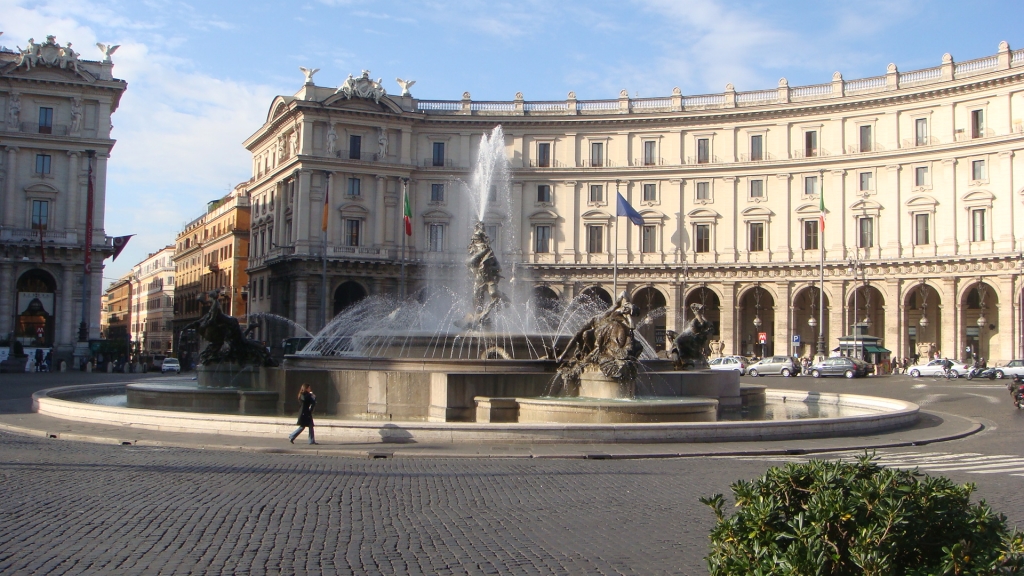
Piazza de Colonna
Meaning “column square” in English, Piazza de Colonna is located on the street Via del Corso. The marble column that visitors see in the middle of the square has been standing here since AD 193. It was built in honor of Emperor Marcus Aurelius and was put there after his death. It was supposed to be in celebration of the empire’s victory in the Marcomannic Wars. In 1589, a bronze statue of St. Paul was put on top of the column. A few meters from Piazza de Colonna is the Palazzo di Montecitorio which houses the Italian parliament.



